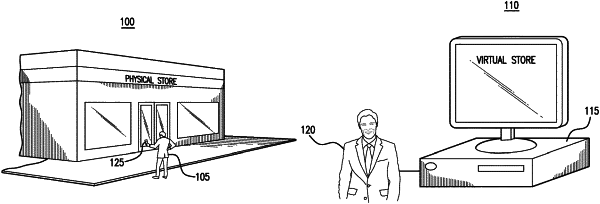| CPC G06V 20/10 (2022.01) [G06N 20/00 (2019.01); G06Q 30/0633 (2013.01); G06V 10/70 (2022.01)] | 17 Claims |

|
1. An apparatus comprising:
a hardware processor configured to:
receive an algorithmic shopping cart comprising a first set of items, the first set of items determined by an algorithm to have been selected by a first person during a shopping session in a physical store, based on a set of inputs received from sensors located within the physical store;
receive a virtual shopping cart comprising a first set of virtual items, wherein each virtual item is added to the virtual shopping cart to represent a corresponding physical item selected by the first person during the shopping session;
compare the algorithmic shopping cart to the virtual shopping cart;
in response to comparing the algorithmic shopping cart to the virtual shopping cart:
determine that the algorithmic shopping cart is consistent with the virtual shopping cart; and
generate a receipt based at least in part upon the items contained in either the virtual shopping cart or the algorithmic shopping cart;
receive a second algorithmic shopping cart comprising a second set of items, the second set of items determined by the algorithm to have been selected by a second person during a second shopping session in the physical store, based on a second set of inputs received from the sensors located within the physical store;
receive a second virtual shopping cart comprising a second set of virtual items associated with the second shopping session;
compare the second algorithmic shopping cart to the second virtual shopping cart; and
in response to comparing the second algorithmic shopping cart to the second virtual shopping cart, determine that the second algorithmic shopping cart matches the second virtual shopping cart.
|